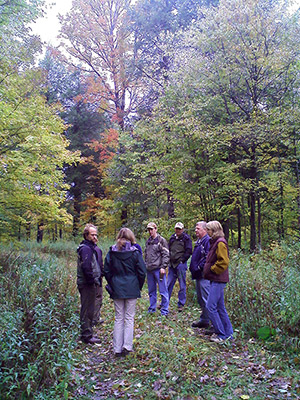Project Aims

Conservation strategies are shifting to distribute protection efforts over larger areas and a broader range of ownerships and management techniques. These "distributed conservation strategies" are based on the premise that blending resource extraction, such as sustainable timber harvest, and conservation should yield greater socio-economic benefits without significantly compromising the conservation of biodiversity or the sustainable provisioning of ecosystem services.
In this collaborative project between UW-Madison, The Nature Conservancy, and LandFire, we have worked with local and regional experts to build and model landscape scenarios to evaluate the effectiveness of various conservation strategies under climate change pressures. This project focuses on two study sites - the Wild Rivers Legacy Forest in northeastern Wisconsin and the Two Hearted River Watershed in Michigan's Upper Peninsula.
The aims of this approach were:
- to enable conservation practitioners and decision-makers to compare the potential outcomes of different conservation strategies and make informed decisions about how to best utilize scarce financial resources and reduce the risks associated with the implementation of innovative strategies
- set the stage for continued cooperative conservation planning and management among the diverse organizations at work on these landscapes
- develop an approach for using state and transition modeling, LANDFIRE, and local data in a collaborative setting to support conservation and land management decision-making